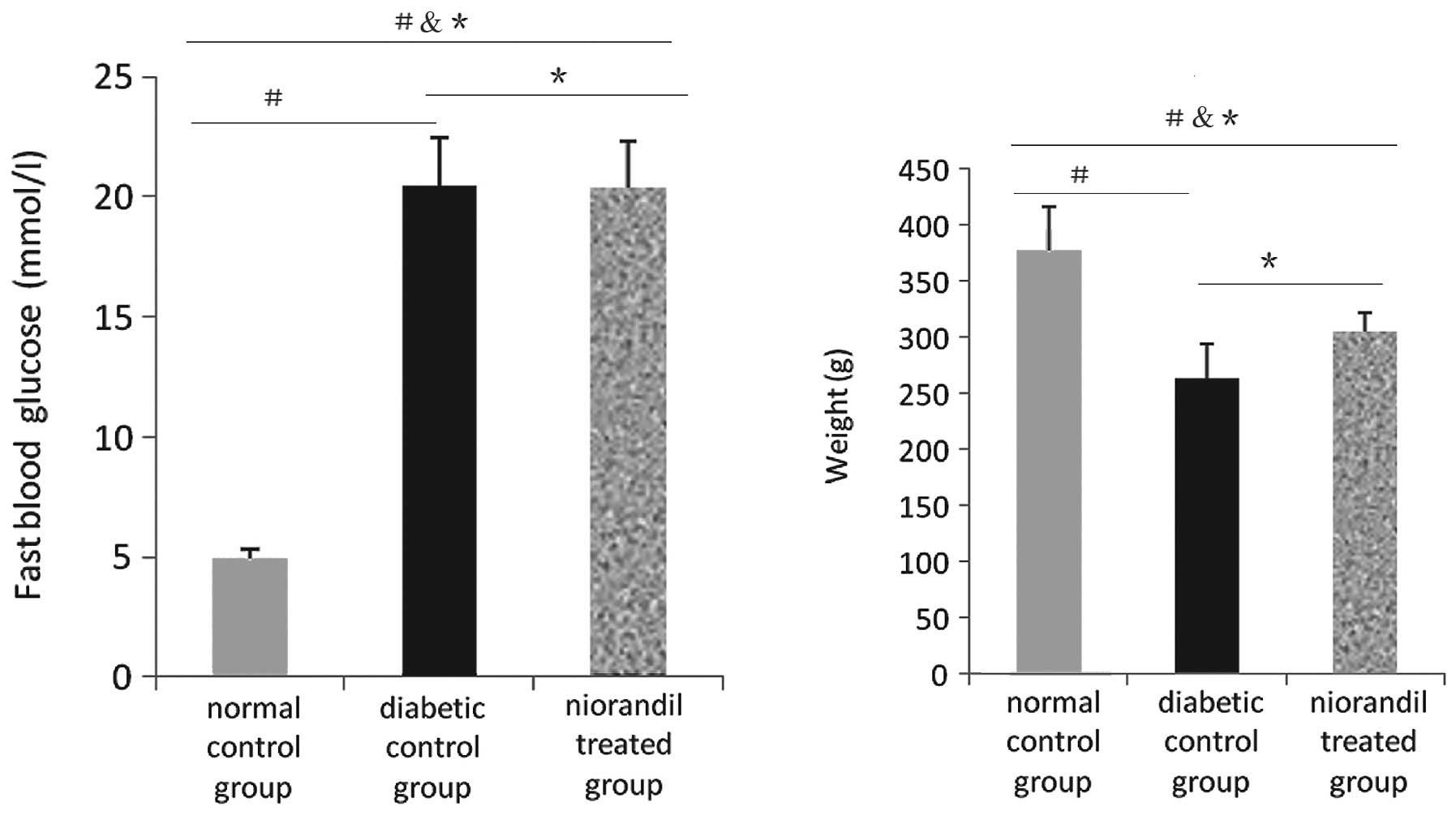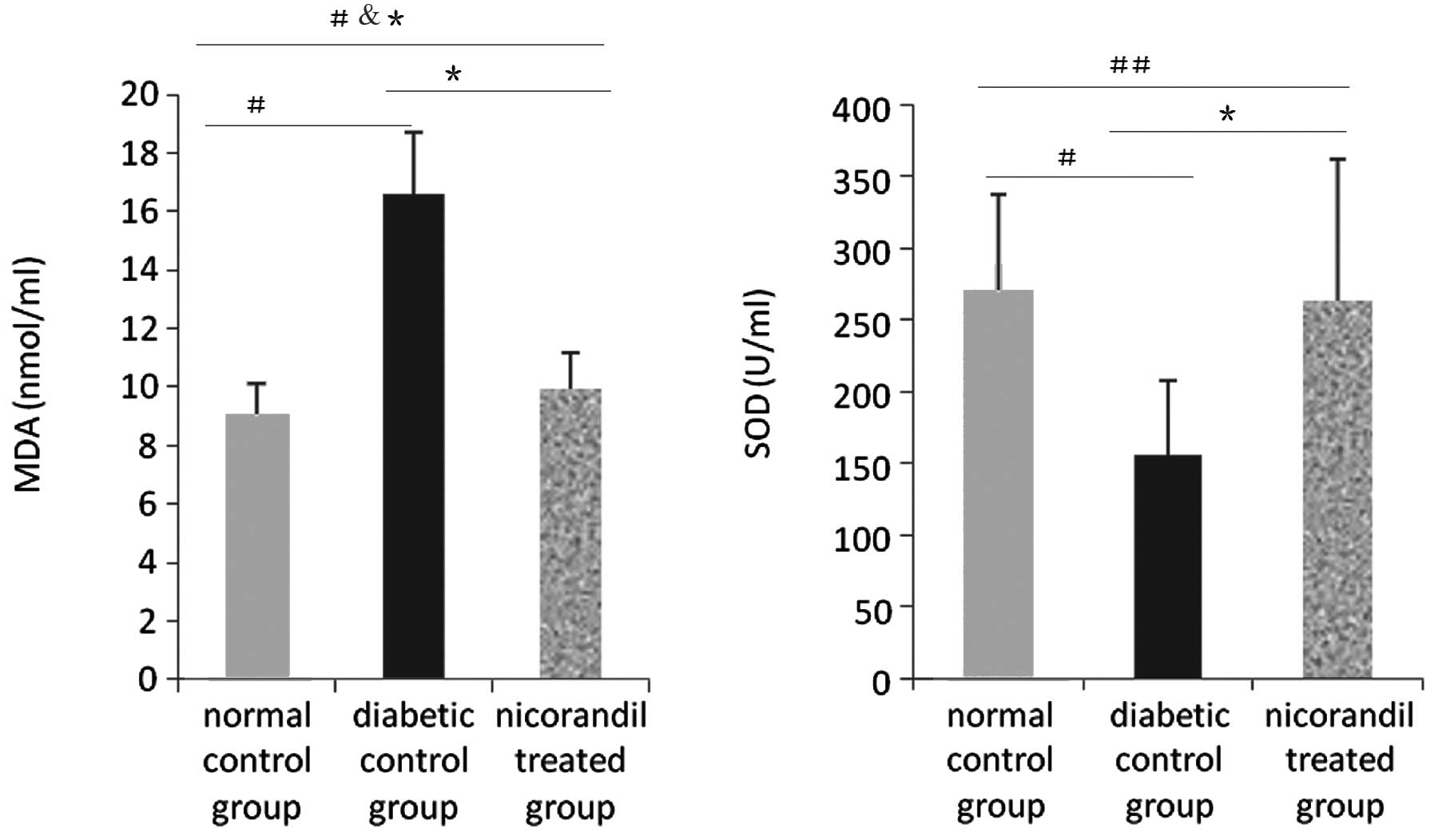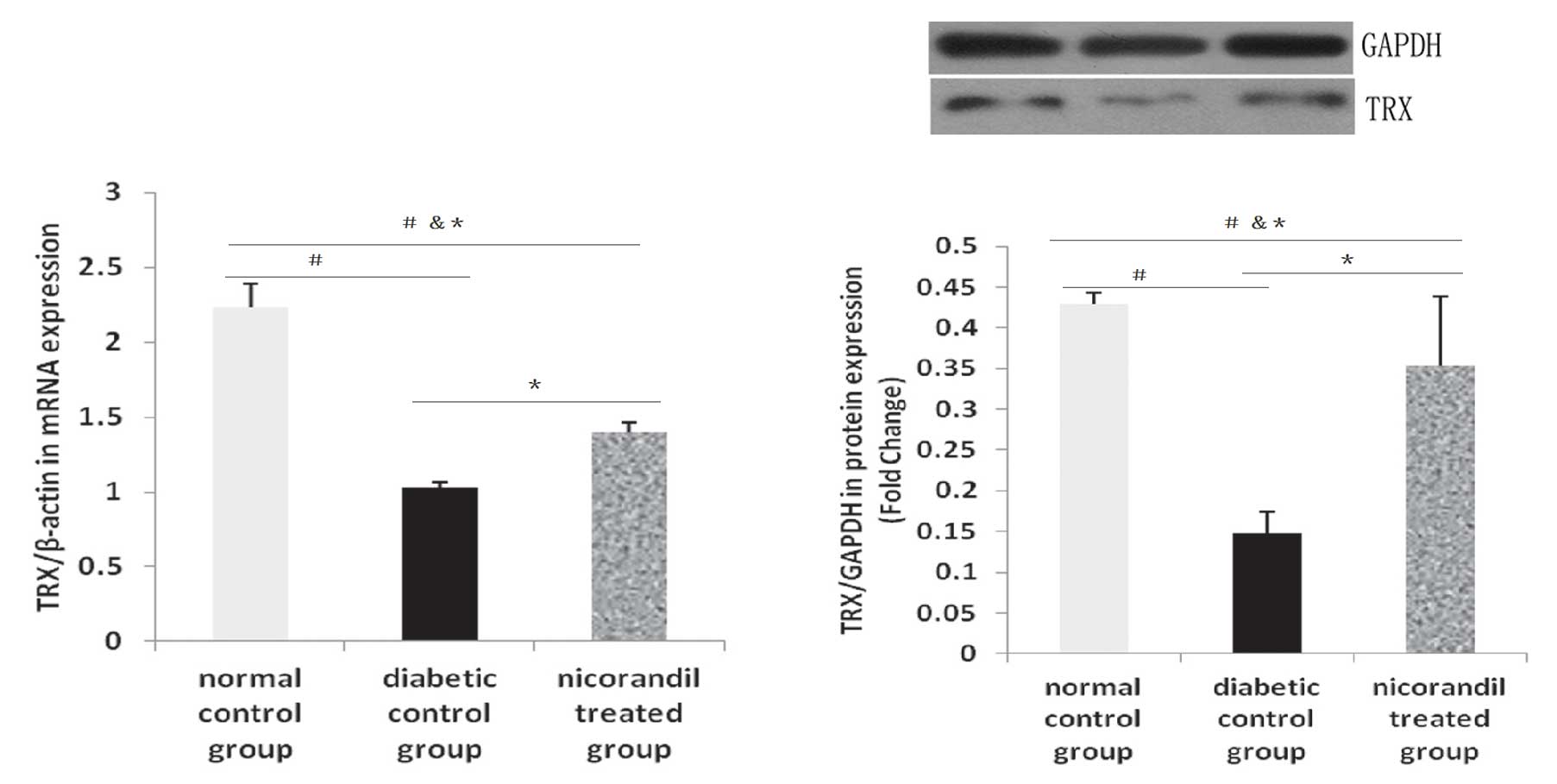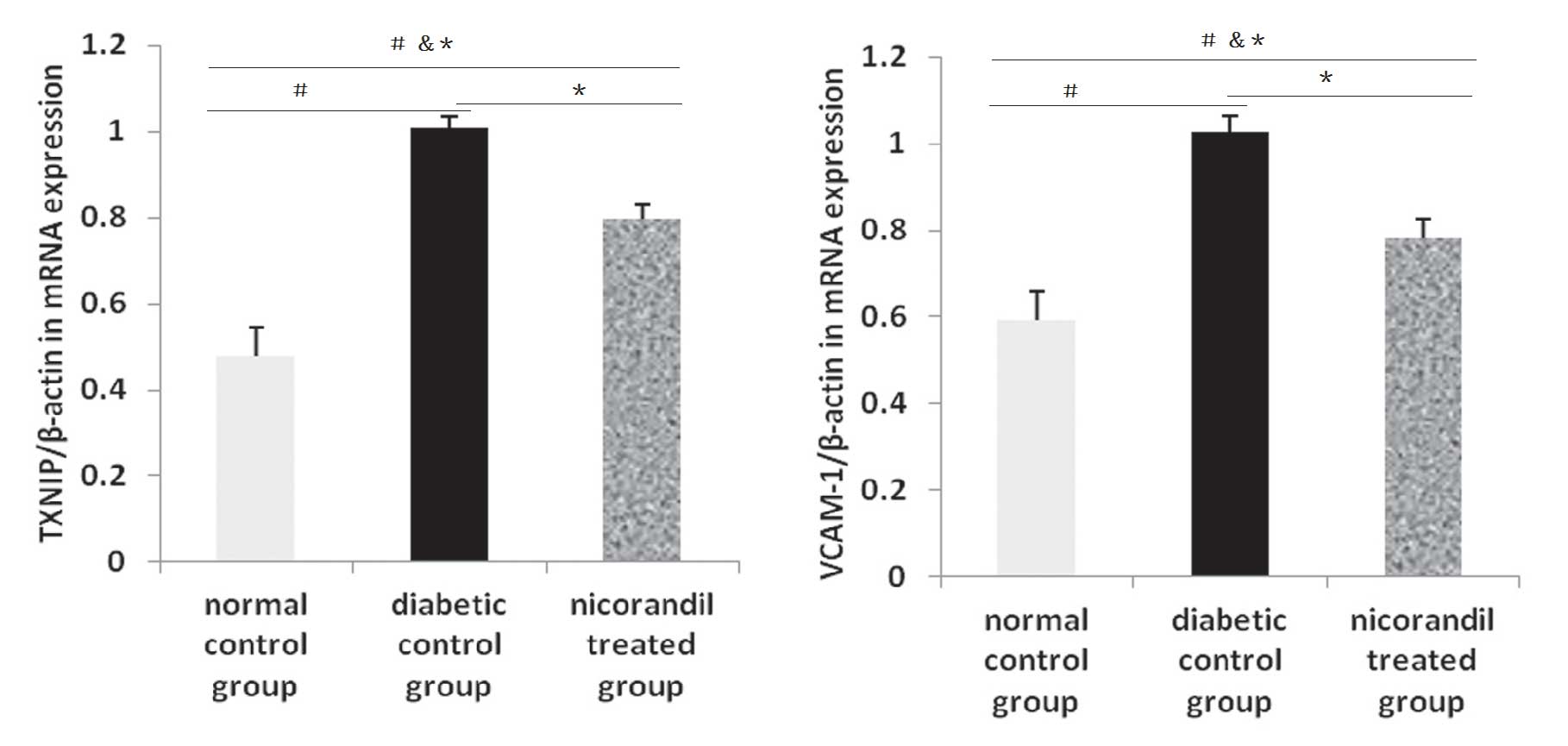Nicorandil attenuates endothelial VCAM‑1 expression via thioredoxin production in diabetic rats induced by streptozotocin
- Authors:
- Published online on: March 24, 2014 https://doi.org/10.3892/mmr.2014.2066
- Pages: 2227-2232
Metrics: Total
Views: 0 (Spandidos Publications: | PMC Statistics: )
Total PDF Downloads: 0 (Spandidos Publications: | PMC Statistics: )
Abstract
The anti‑angina agent nicorandil has been reported to be beneficial even in patients who have angina with diabetes. However, the mechanism underlying the effect of nicorandil in patients with diabetes remains to be elucidated. In this study, the protective effect of nicorandil on thioredoxin (TRX) protein was investigated, as TRX is a multifunctional endogenous redox regulator that protects cells against various types of cellular and tissue stress. This study was conducted to examine whether nicorandil induces the expression of TRX for the protection against diabetic damage in the vascular tissue of rats. Diabetes was induced in rats by intraperitoneal injection of streptozotocin (STZ) (fasting glucose levels in STZ‑induced rats were >14 mmol/l). Diabetic rats were divided into a diabetic control and a nicorandil‑treated group. Nicorandil was administered at a dosage of 15 mg/kg/day by gavage feeding. After five weeks of nicorandil administration, blood samples were obtained from the angular vein to measure levels of stress markers, serum superoxide dismutase and malondialdehyde, using the ELISA. The expression of TRX in STZ‑induced rat vascular tissue was analyzed by immunohistochemistry, quantitative polymerase chain reaction (qPCR) and western blot analysis. The oral administration of nicorandil induced TRX protein and mRNA expression in the vascular tissue of STZ‑induced diabetic rats. In the diabetic control group, the levels of stress were markedly higher than those in the nicorandil‑treated group, indicating that nicorandil reduces oxidative stress in serum. In addition to inducing TRX expression, nicorandil attenuated the expression of the vascular cell adhesion molecule‑1 (VCAM‑1) in diabetic rat vascular endothelial cells. In conclusion, nicorandil attenuates the formation of reactive oxygen species and induces TRX protein expression, consequently resulting in the suppression of VCAM‑1 secretion in the vascular endothelial cells of STZ‑induced diabetic rats.














